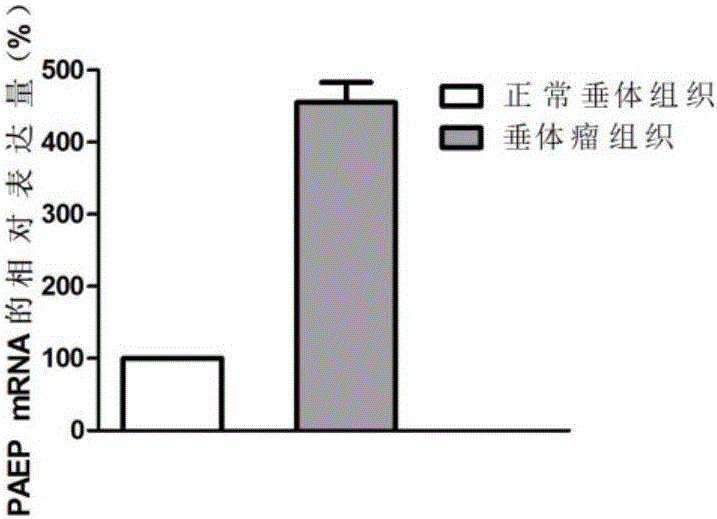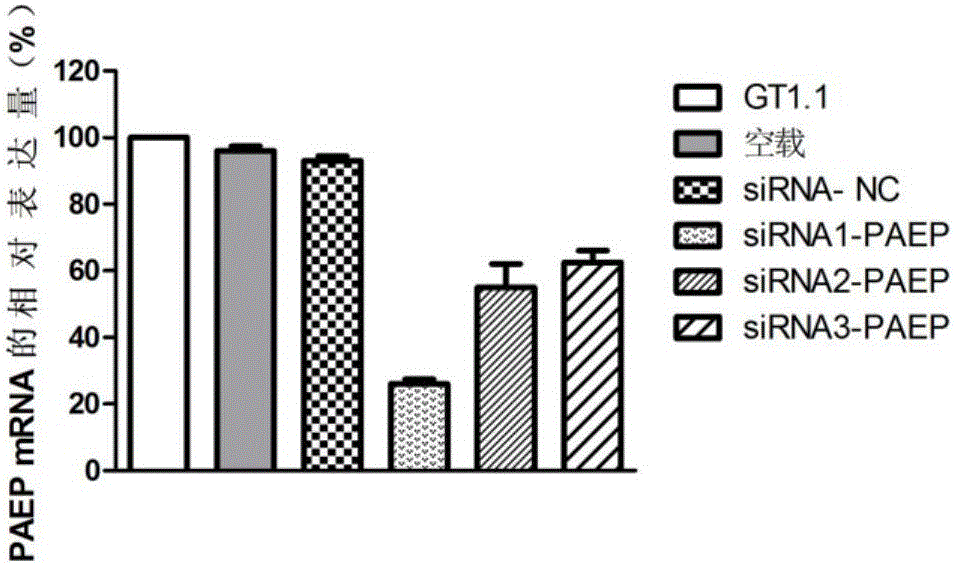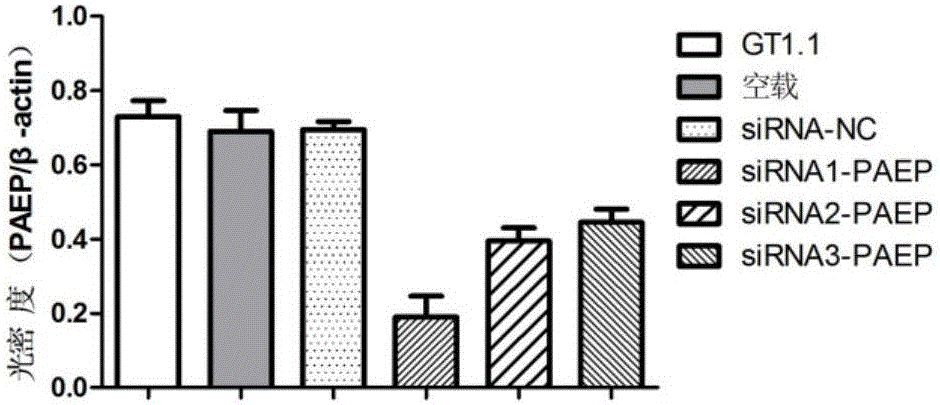Molecular marker for diagnosis and treatment of pituitary adenoma
A pituitary tumor and drug technology, applied in the field of biomedicine, can solve the problems of low pituitary function, unclear mechanism and mechanism, affecting the normal secretion function of the pituitary gland, etc.
- Summary
- Abstract
- Description
- Claims
- Application Information
AI Technical Summary
Problems solved by technology
Method used
Image
Examples
Embodiment 1
[0062] Example 1 Screening for gene markers associated with pituitary tumors
[0063] 1. Sample collection
[0064] Six samples of normal pituitary tissue and pituitary tumor tissue were collected. All the above specimens were obtained with the consent of the organizational ethics committee.
[0065] 2. RNA sample preparation (using miRNAkit for operation)
[0066] The tissues obtained above were shredded, put into liquid nitrogen and ground into powder, and RNA was extracted and isolated according to the instructions in the kit. details as follows:
[0067] 1) Isolation of RNA:
[0068] A. Add in tissue homogenate or cells Reagent II 1ml;
[0069] B. Stand at room temperature for 3 minutes, add 0.2ml chloroform and shake vigorously for 15 seconds;
[0070] C. Place on ice for 10 minutes;
[0071] D. Centrifuge at 12000g for 15min at 4°C;
[0072] E. Transfer 80% of the aqueous phase into a new 2ml EP tube, add 1 / 2 the amount of absolute ethanol, and shake;
[007...
Embodiment 2
[0087] Example 2 QPCR sequencing to verify the differential expression of the PAEP gene
[0088] 1. Large-sample QPCR verification of PAEP gene differential expression. According to the sample collection method in Example 1, 50 cases of normal pituitary tissues and 50 cases of pituitary tumor tissues were selected.
[0089] 2. The RNA extraction steps are as described in Example 1.
[0090] 3. Reverse transcription:
[0091] 1) Reaction system:
[0092] Reagent
volume
MgCl 2
2μl
10×RT Buffer
1μl
RNase-free water
3.75μl
dNTP mix
1μl
RNase inhibitor
0.25μl
0.5μl
Oligo-dT Adapter Primer
0.5μl
Experimental sample
1μl
[0093] 2) Reverse transcription reaction conditions
[0094] According to the reverse transcription reaction conditions in RNAPCRKit (AMV) Ver.3.0.
[0095] 42°C~55°C for 60 minutes, 99°C for 2 minutes, 5°C for 5 minutes.
[0...
Embodiment 3
[0113] Overexpression of embodiment 3PAEP gene
[0114] 1. Cell culture
[0115] Human pituitary tumor cell line GT1.1 was incubated at 37°C and 5% CO in medium 1640 containing 10% fetal bovine serum and 1% P / S. 2 , Cultivated in an incubator with a relative humidity of 90%. Change the medium once every 2-3 days, and use 0.25% EDTA-containing trypsin for routine digestion and passage.
[0116] 2. siRNA design
[0117] siRNA sequence against PAEP gene:
[0118] Negative control siRNA sequence (siRNA-NC):
[0119] The sense strand is 5'-UUCUCCGAACGUGUCACGU-3' (SEQ ID NO.7),
[0120] The antisense strand is 5'-ACGUGACACGUUCGGAGAA-3' (SEQ ID NO.8);
[0121] siRNA1-PLD5:
[0122] The sense strand is 5'-AACUUCUUUGGAUUCUCAGUC-3' (SEQ ID NO.9),
[0123] The antisense strand is 5'-CUGAGAAUCCAAAAGAAGUUCA-3' (SEQ ID NO.10);
[0124] siRNA2-PLD5:
[0125] The sense strand is 5'-UUGAUCUUGAACUUCUUUGGA-3' (SEQ ID NO.11),
[0126] The antisense strand is 5'-CAAAGAAGUUCAAGAUCAACU-3'...
PUM
 Login to View More
Login to View More Abstract
Description
Claims
Application Information
 Login to View More
Login to View More - R&D
- Intellectual Property
- Life Sciences
- Materials
- Tech Scout
- Unparalleled Data Quality
- Higher Quality Content
- 60% Fewer Hallucinations
Browse by: Latest US Patents, China's latest patents, Technical Efficacy Thesaurus, Application Domain, Technology Topic, Popular Technical Reports.
© 2025 PatSnap. All rights reserved.Legal|Privacy policy|Modern Slavery Act Transparency Statement|Sitemap|About US| Contact US: help@patsnap.com



